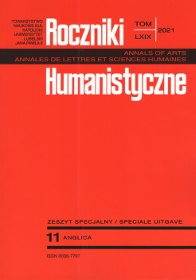The Position of Middle Irish: Historical Linguistics and Glottochronology
Pozycja języka średnioirlandzkiego: językoznawstwo historyczne a glottochronologia
Author(s): Tatiana MikhailovaSubject(s): Language and Literature Studies, Theoretical Linguistics, Semantics, Historical Linguistics
Published by: Towarzystwo Naukowe KUL & Katolicki Uniwersytet Lubelski Jana Pawła II
Keywords: history of the Irish language; semantic shifts; language typology; glottochronology; semantic derivation; etymology
Summary/Abstract: A new method of “dating” language changes was proposed in the 1950s by Morris Swadesh (1952, 1955), who examined changes in the basic vocabulary of a language and postulated that the 1000-year retention rate represents 86% of the vocabulary; in other words, 14 words from a 100-word list must be replaced. An attempt to calculate the split between Goidelic and Brittonic based on this approach was made in Greene (1964) and later in a fundamental study by Elsie (1979) containing, unfortunately, some inaccuracies. In Blažek and Novotná (2006) this split between Goidelic and Brittonic is dated to ca. 1200 BC. The authors used a new calibration, with a change in the constant of disintegration λ from 0.14 to 0.05 per millennium, the elimination of borrowings and the inclusion of synonyms in the wordlist. The use of synonyms compromises the original Swadesh idea of the basic vocabulary of a language, and automatically leads to its artificial archaisation. This article tries to demonstrate the possibility of an analysis of semantic changes in basic Irish vocabulary using the non-modified version of the Swadesh method and to define a possible date for the growth of the Middle Irish language stratum.
Journal: Roczniki Humanistyczne
- Issue Year: 69/2021
- Issue No: 11S
- Page Range: 129-148
- Page Count: 20
- Language: English

